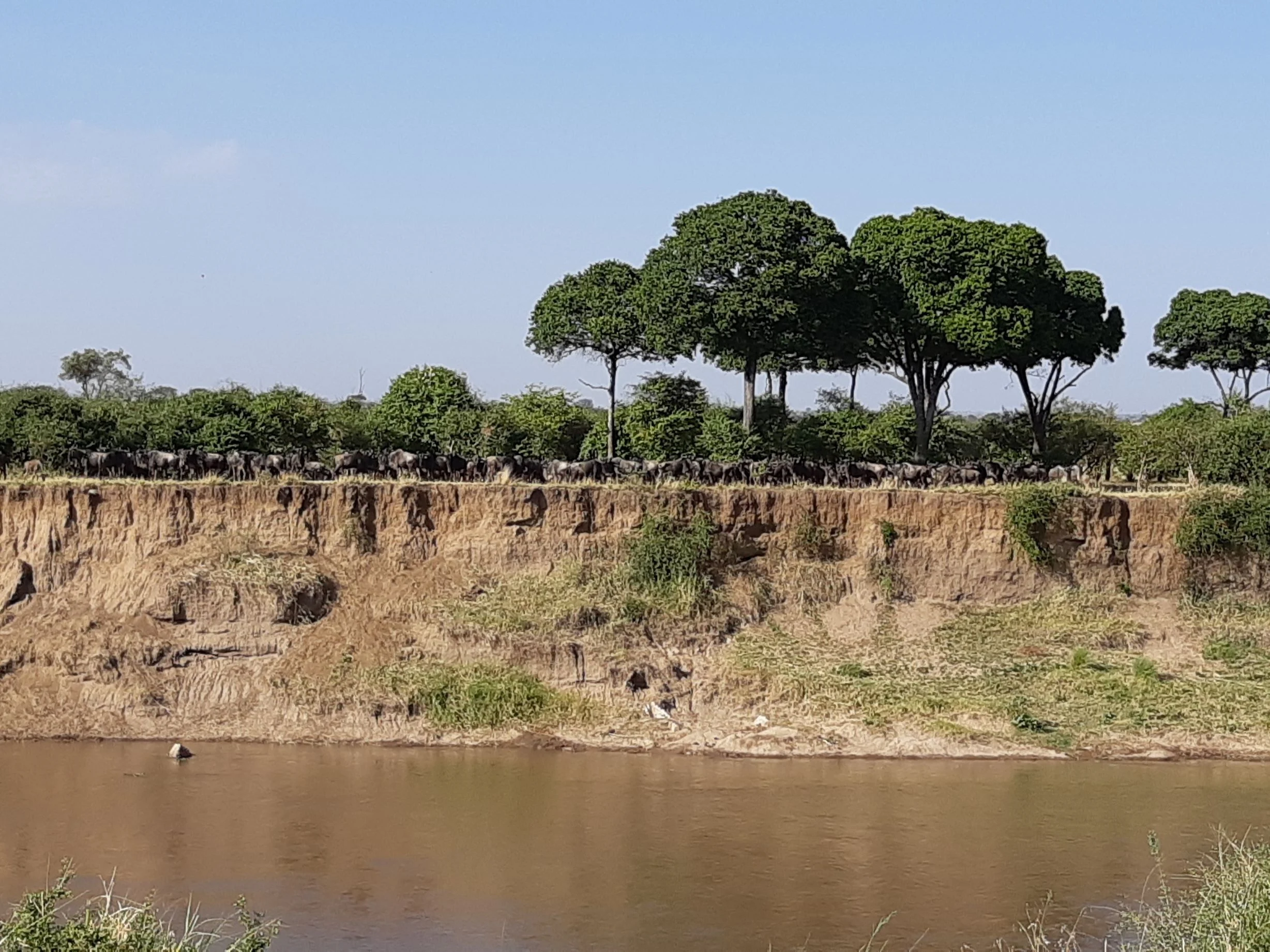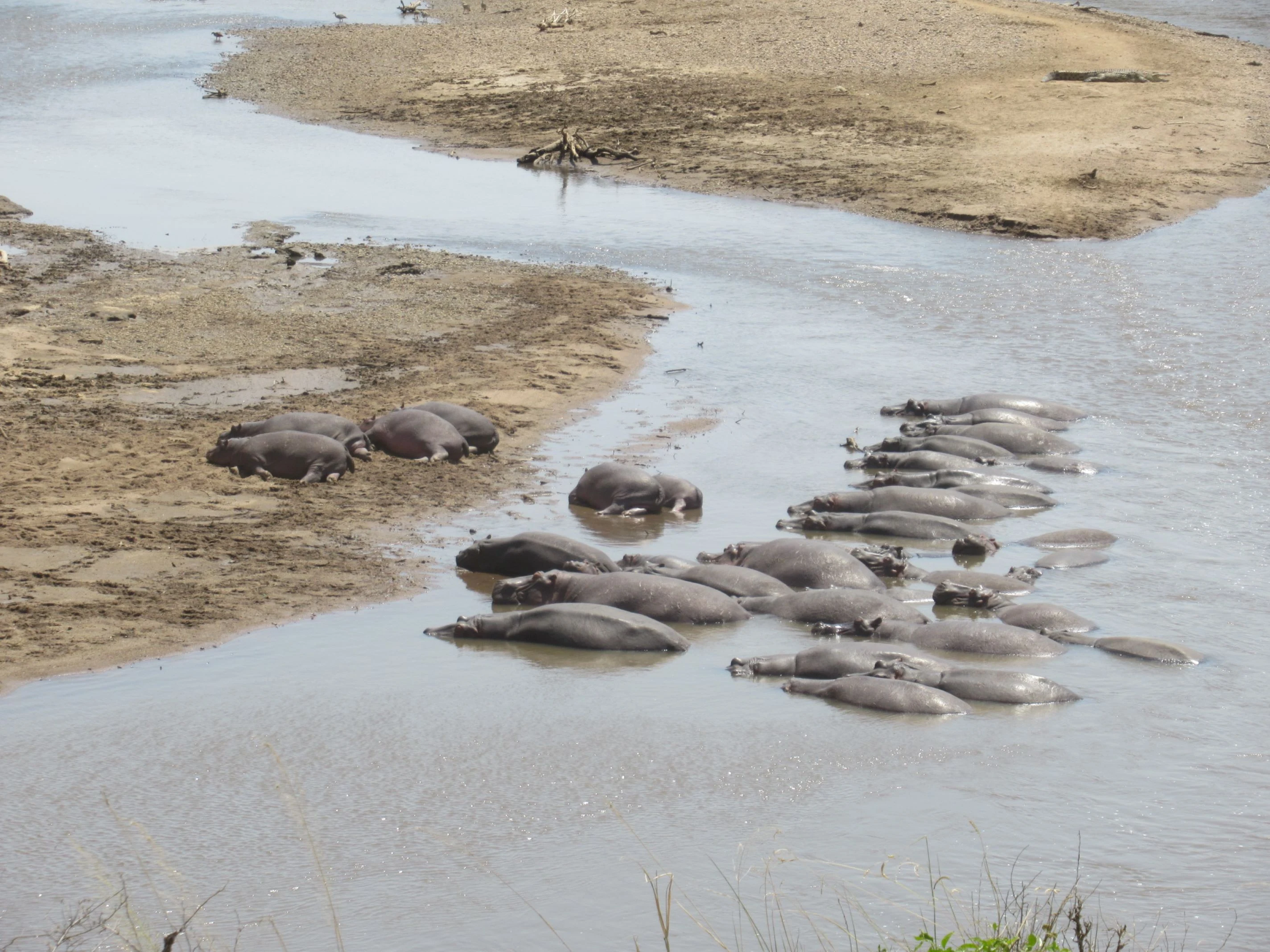Our travels currently, are in the east-African country of Kenya, and we have just had a wonderful time exploring Kenya’s’ capital Nairobi. Kenya is the “home of safaris” so of course, we couldn’t be in Kenya without going on one, so that's what we did.
 |
| Elephant seen at Amboseli National Park (UNESCO), Kenya |
After a lot of research at home, we decided on our route and a safari company. Our route was to take us through Kenya's Amboseli National Park which is a UNESCO World Heritage Site, Lake Nakuru National Park, and Maasai Mara National Reserve, all protected but unfenced wilderness areas. We chose Ramja Safaris as our safari company and they offered this route over 6 days/5 nights.
At the beginning of our safari, Steve, the director at Ramja Safaris met us at our hotel in Nairobi and introduced us to James, our guide and driver. Then we loaded our gear into the Ramja Toyota 4x4 Landcruiser, customised to hold 6 passengers and with a pop-top roof for viewing wildlife, and we were off. We had booked this as a private tour, rather than a group tour so there was just us and James.
 |
| Typical villages in Kenya |
Our first park, Amboseli National Park, is around 220 km south of Nairobi. Driving there provided us with a fascinating look at many small villages along the way, and gave us a peek at rural life in Kenya. All villages had several metres of dirt between the road and the shops or houses, and that dusty frontage was the gathering place for everything, including vehicles, animals, people and their produce. The drive took around 4 hours in Kenya’s busy traffic and bumpy rural roads, but it was so interesting.
 |
| Marg outside our tented accommodation for Amboseli National Park, Kenya |
Arriving at Amboseli, we were immediately taken to our accommodation which was a permanent tent with ensuite. Then we were given lunch. Our safari deal included accommodation and all meals, and Sentrim Amboseli Lodge where we stayed for two nights, was great at both. That afternoon, we went for our first game drive within the overall safari.
We had a short drive along a very sandy and rugged road, to the park entrance. After the entry requirements were met, we drove into the park, and right there in front of us was a huge giraffe. Crickey …. we weren’t expecting that! James told us that it was a Maasai Giraffe, one of the three giraffe species in Kenya. This giraffe seemed quite immune to our vehicle as we were right beside him and he didn’t flinch.
Many photos later, we drove on, then arrived at a zebra crossing! No white stripes on the road, but plenty on the zebra. We saw heaps of zebras, mostly gathering in herds for sociability and safety. Apparently, a predator can be confused by a mass of moving black and white stripes, and will leave them alone …. until one wanders off by itself.
-4x3a.jpg) |
| Elephants at Amboseli National Park (UNESCO), Kenya |
We hadn’t gone very far when we spotted our next animal. Actually, they weren’t that hard to spot because they were huge. It was a family of elephants, herding a calf across the road right in front of our car. Female elephants are very sociable and live in family herds, while adult males are more solitary. These were African bush elephants, a species that is considered endangered due to poaching, and loss of habitat for livestock.
Next, we went looking for lions, and we were very successful thanks to James who pointed out a huge lion that walked out of the bush into the open. Driving on, we saw gazelles, impalas, baboons, several bird varieties including a huge ostrich, warthogs, and heaps more zebras, giraffes, and wildebeest. What a great day.
The next morning, we set out early for a second game drive at Amboseli. It was another fruitful day and we saw heaps more zebra and giraffe, as well elephants, hyena, lions, and buffalo. But a highlight was seeing a hippopotamus. This giant was hanging around the water hole on the other side of where we’d seen some elephants.
Nearby was a huge flock of pink flamingos and their grey chicks, their reflections shimmering in the still waters. Around the waterhole, we also saw many buffalo grazing and lying about in the water, and lots of different wading birds. The water comes from nearby Mt Kilimanjaro, Africa’s highest mountain at 5895m above sea level.
Kilimanjaro is actually in neighbouring Tanzania, but this UNESCO World Heritage Site is so high, it can be seen from Kenya, and we saw it as the high cloud cleared on our last day in Amboseli. Leaving the Amboseli area, we headed to our next destination, at Lake Nakuru National Park. Once again, we enjoyed travelling through the rural villages.
On the way, we stopped at a lookout over the Rift Valley. Created 35 million years ago, it runs for 9,600 km from the Red Sea to Mozambique and houses a diverse landscape of glaciers, volcanoes, rainforests, savannah and lakes. Three of those lakes are UNESCO World Heritage sites and we were going to see two of them - Lake Nakuru and Lake Elementaita.
Our accommodation was right on Lake Elementaita, and from our room we had a great view of the lake, and some of its many pelicans and flamingos. The next morning, we went on a game drive to Lake Nakuru National Park and spotted rhinoceros. They are massive and grumpy-looking, but took absolutely no notice of us as we crept up quite close to them in the car.
Leaving the park, we again passed through many villages where we saw goats being taken by motorcycle to the goat market, lots of working donkeys, and very verdant and cultivated land. But for most of the way, the road was tortuous and potholed making for a white-knuckle ride! However, when we arrived, the road was forgotten as we were in the famous Maasai Mara National Park.
 |
| Acacia trees on the varied terrain of the Maasai Mara, Kenya |
The Maasai Mara lies within the Rift Valley. It has a landscape that includes vast savannah grasslands, arid plains, and leafy woods. All landscapes grow the very hardy acacia tree that provides food and shelter for so many animals. The reserve is named for the semi-nomadic Maasai people who migrated from northwest Kenya in the 15th century to now populate southern Kenya and northern Tanzania.
-4x3.jpg) |
| Maasai people outside their village enclosure near our hotel, Maasai Mara Reserve, Kenya |
Close to our lodge in the Maasai Mara, was a Maasai village. It was enclosed by thick bush as protection from wind and wild animals, and the Maasai families live in two-room huts within the enclosure. They are herders and sell their stock for a living. Most still wear their traditional clothing of red, blue or yellow shuka cloth and colorful beads, with a rod as a weapon. They still practice many of their traditions and are relatively untouched by modern civilization.
One reason for visiting the Maasai Mara was to see the Great Migration. This is the annual movement of over a million wildebeest, and thousands of zebras and gazelles, searching for food through the Maasai Mara in Kenya and the Serengeti in Tanzania. We saw huge lines of them stretching across the horizon as they munched their way onwards.
 |
| Wildebeest deciding whether to cross the Mara River, Maasai Mara, Kenya |
A sight often lauded as a bucket-list activity is watching these animals cross the Mara River where predators lie in wait. We arrived at a river crossing point ready to watch whatever unfolded. But, as we watched, several other safari vehicles roared up and any wildebeest that were thinking about crossing, ran off.
But while there, we were taken by surprise at the sight of dozens of hippos, lazing along the riverbank like giant grey slugs, seemingly unaware of any drama that may unfold with the wildebeest further up the river. We had another game drive in the Maasai Mara the next day seeing more elephants, zebras, giraffes, gazelles, and birds. It was great.
 |
| African buffalo, Maasai Mara National Park, Kenya |
Throughout our whole safari, James provided background information on the animals that we saw, and he told us about the “Big Five”. Originally this referred to the difficulty of hunting 5 particularly dangerous animals, but now it’s about seeing them. We’ve spotted 4 of the 5 which are the lion, rhino, elephant and African buffalo. We are still to see the 5th, the leopard.
One of the last sightings we had was of lions sleeping off the heat of the day. We’ve loved this safari and seeing animals in the wild, the terrain and the people. Our safari at an end, we were driven back to Nairobi where we stopped at the famous Carnivore Restaurant for lunch and sampled various game meats. It was delicious. Our travels take us next to Uganda, but you can read about that in the next blog.
This blog is part of a series on our travels in eastern Africa. The first in this series is called Johannesburg, South Africa.


-4x3.jpg)
.jpg)
.JPG)




-a.jpg)


